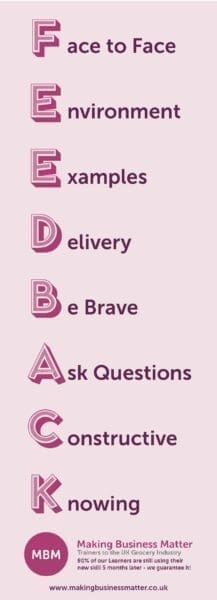How to Achieve Effective Communication
We all learned different communication styles growing up. For some, communicating at work and in the business world is a challenge. We may have learned some of these techniques at school or at home, but using them on a daily basis might be a daunting task. Many of us just learn as we go, but it’s in our best interest to also study how effective communication works in the business setting.
If you’re interested in studying the principles of effective communication, then read on to learn more. It’s estimated that 46% of employees, according to the Entrepreneur Magazine, rarely or never know what they’re supposed to do after a meeting because of a lack of effective communication. This seems to happen on a regular basis.
The question is — why does this happen? The most likely cause is ineffective communication. At work, we have countless opportunities to effectively communicate our message. The question is, how can we capitalise on these interactions by using effective communication?
10 Principles For Great Effective Communication
Effective communication helps us to capitalise on our daily business interactions. Use the following principles of effective communication and techniques to improve your interactions at work.
1. Gauge the Setting
The setting of any conversation will dictate the communication style you use. Setting includes the purpose of the occasion, the location, as well as the audience. You must first fully understand these components before you decide what message to communicate and how to deliver it. Before going into a business setting, figure out what the tone of the setting is beforehand.
Know who the audience is and exactly what they expect from you. You should also be willing to set the tone of setting yourself if you are in a leadership role. People will follow your lead, so do your best to set a good example by setting the right tone. Greet people enthusiastically when they enter the meeting space. Offer them a beverage such as water or coffee if it’s available. Ask them if they need anything before formal communication begins. Explain to them in advance what your expectations are for the interaction.
For example, tell them you will summarize the main points at the end of the presentation. Notify them that you’re also willing to hear their feedback and answer any questions at that time. Before they leave, also make sure that everyone understands what steps they need to take next.
2. Use Approachable Body Language
The words we speak are only part of the communication process.
Ever noticed someone was sad without them saying a word? Their head was probably down, their faces long, and their bodies hunched. This example demonstrates the power of body language.
According to body language expert, Mark Bowden during his Ted Talk, humans unconsciously read one another’s body language. We look at people’s facial expressions, their posture, as well as the placement of their limbs. These cues help us decide if someone is approachable or if we should “retreat”. To have confident business body language, it’s important to make your movements clear and consistent. Otherwise, others may unconsciously misconstrue your intentions believing them to be negative.
To be approachable, take advantage of times when it’s appropriate to smile. Build the smile for three seconds letting the eyes crease and make eye contact with the person or persons you’re talking to. Extend the arms and hands at belly button height while exposing your palms and stomach.
When you need to have a serious conversation in a business setting, it’s important to reduce threatening body language as much as possible. Such as clenching your jaw, crossing your arms, or rolling your eyes. Instead use empathetic movements such as nodding your head, moving at a slower pace, and making eye contact.
When in doubt and when appropriate, match the body language of the person you’re speaking to.
3. Adjust Your Tone
The tone of your voice also needs to match the business occasion. The tone of our voices reveals a lot about how we feel despite our best intentions. In a business setting, this can mean making or breaking important relationships. If we want to motivate people, then taking on a frustrated tone won’t be inspiring. It will only show our audience that we are upset with their performance. This could cause them to be offended or to avoid future interactions with us.
Aim to have an upbeat tone to your voice at light-hearted occasions such as networking, presenting, and having lunch. For more serious conversations aim to have a soft, non-aggressive tone to convey compassion and empathy.
Practise what you need to say out loud beforehand. Listen to the tone of your voice as you speak to get an idea of how it would be received.
Imagine how you will maintain your tone of voice and react if you feel emotional. Practise taking control of your tone in those moments and reacting in a way that is professional and beneficial.
4. Ask Effective Communication Questions
Asking questions lets our business counterparts know we are listening and interested in them. We can ask questions to understand or to spark thinking. Questions like, “What are your thoughts?”, “How do you feel about this?”, and “What could we improve for next time?” are great ways to further a discussion. This also engages the audience and lets them know that their viewpoints matter.

If we’re asking questions for clarity, then it’s best to also attempt to paraphrase what we believe we heard. For example, “What I’m hearing you say is that we need to increase our sales. Is that correct?” Doing this creates a connexion with the other person by letting them know we listened to what they said.
This should only be done, however, if we’re not exactly sure what they’re trying to communicate or if the subject matter is complicated.
If we have no idea what the other person said then we can simply say, “I’m sorry, could you repeat that again please?” Doing so allows everyone in the discussion to be on the same page and to avoid any misunderstandings.
5. Listen to Understand
Many of us listen to respond instead of to understand. This can create unnecessary tension leading our audience to believe that we don’t care about what they said. Don’t feel the need to automatically respond in a business setting. You can simply acknowledge that you understood by saying, “I understand your point” or “I understand what you’re saying.” After the sender feels heard, we can respond if we need to.
Use your body language to also convey that you’re listening. Nod your head, open your posture, and make eye contact. Writing down notes also helps you to understand and remember what the speaker said.
The goal is to always make the speaker feel like their opinions, thoughts, and the information they’re presenting is valuable. We want to avoid interrupting them and responding for our own gratification. Instead, we should allow them to be the leader of the conversation until it’s appropriate for us to speak again.
6. Cultivate Respect
Our main focus when using any of these communication techniques is to be respectful. When we respect others we create a space where trust, connexion, and teamwork can flourish. We can do this by saying the other person’s name and listening to them intently. We can also seek to eliminate or minimise distractions.
For example, we can say to someone, “Hey, I really want to hear what you’re saying, Brian. Let’s head over to the conference room so I can fully hear and listen to what you’re saying.” We can also silence or put away our phones during a meeting. Editing our emails before sending them is a sign of respect as well. This shows the other person that we care about how they view us and how we view ourselves in the workplace.
7. To the Point Effective Communication
In the business world, people are busy. The person you’re speaking with may have other tasks on their mind or be on a tight schedule.
This is why it’s important to be clear and to the point when speaking to someone at work. You also need to be punctual and wrap up the conversation in a timely manner. When you’re to the point, this also reduces any miscommunications. Make sure to always highlight and repeat the most important points when speaking to others.
This is easier to do over email, but can also be achieved in person. For example, when you’re going to speak in person use the least amount of words possible to convey your message. Be friendly, of course, but when business matters are discussed stick to your main points.
Before you go to speak with the other person have in mind exactly what it is you want to say. Mentally practise beforehand if needed to ensure your message is effectively received.
You can also suggest sending an email to the person after the discussion highlighting the main points of your conversation.
8. Be Mindful of Presentation
The way you present yourself also sends a message. Your presentation includes the clothes you’re wearing, your perfume or cologne, and also your hygiene. If you want people to listen to you and take you seriously, then you need to dress the part. Simply put, poor hygiene and attire will likely distract the person you’re speaking to.

If your clothes are dirty or unkempt, then this also will affect how the other person views you. If they’re too busy trying to understand your wardrobe, then they might miss the message you’re communicating.
Aim to wear business formal or business casual on a daily basis. For important meetings or events always wear business formal attire. Stick to your office’s dress code and always look your best.
9. Provide Feedback via Effective Communication
After you feel like you completely understand the speaker, it’s time to provide some feedback. Feedback gives the speaker an idea of how effectively they reached their goals.
Feedback has many forms. Praise, advice, and comments are all forms of feedback. You want to be honest with your feedback, but also tactful. Aim to be respectful as well.
One way to do this is by using “I” statements. Using “I” statements communicates that the feedback is only your opinion. It communicates to the speaker that your feedback is not a matter of fact which everyone in attendance believes.
Using “I” statements also communicates to the rest of the audience that you don’t speak for the group. This will allow other people to feel more comfortable giving their own feedback, too.
Click the image below for a higher resolution.

Another strategy is using “we” statements. Using “we” statements is highly effective when critiquing someone’s work and offering suggestions for improvement. It creates a sense of collaboration in the interaction instead of purely critiquing.
For example, imagine your coworker asks for your feedback on a project they’re working on. Instead of saying “I would change this” say, “I wonder if we could change the intro?” Phrasing it as a question also allows the person receiving your feedback to decide if they agree or not.
When speaking, it’s also important to allow others to provide you with feedback. For people uncomfortable speaking in groups, you can provide them with index cards to write questions and feedback on.
10. Plan & Practise Effective Communication
Have a plan and goal in mind when speaking in a business setting. This is especially important for business meetings and presentations. It can be difficult to have a plan and to get started, but preparation is key.
When you are prepared, you feel more confident. Preparation builds confidence. It will allow you to get your point across successfully without seeming too anxious. Even if you are nervous about speaking, having a plan will provide you with a point of reference if you get off track.
The Workplace and Effective Communication
Effective communication gives us the best chance at gaining success. When we are communicating effectively, we feel more self-assured and more respect for ourselves. We also learn more about who we are as a person in the business world.
Remember that communication is a two-way interaction. Even when we are communicating effectively, our messages may not always be interpreted correctly by the receiver. Miscommunications do happen and sometimes they are out of our control.
To best influence the outcome of an interaction, however, it’s always best to invest in using effective communication techniques.
Want to have more effective meetings? Check out our podcast to learn about the formula for achieving productive meetings.
Action: For even more useful content on communication, check out our ultimate guide on communication skills.




